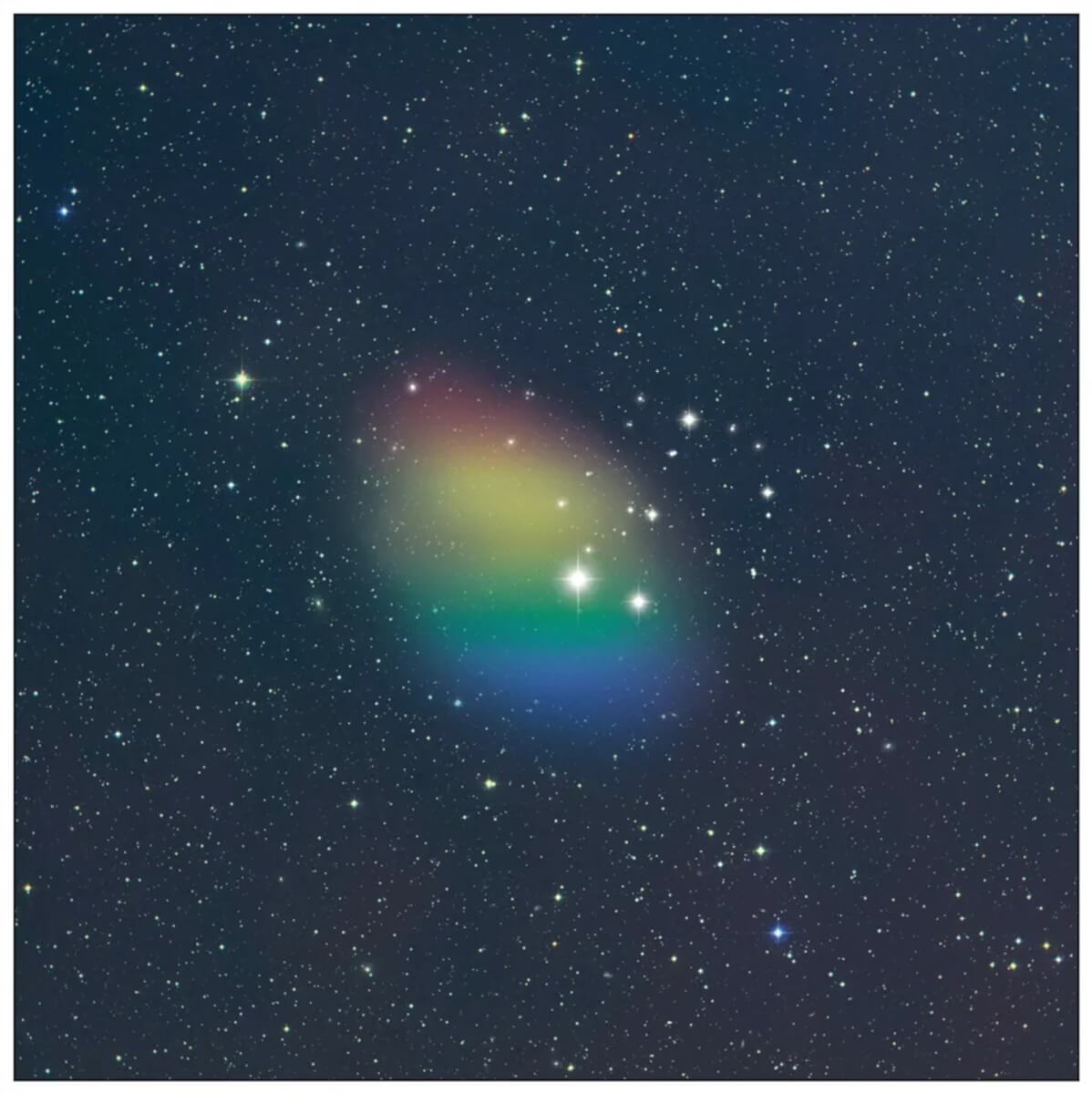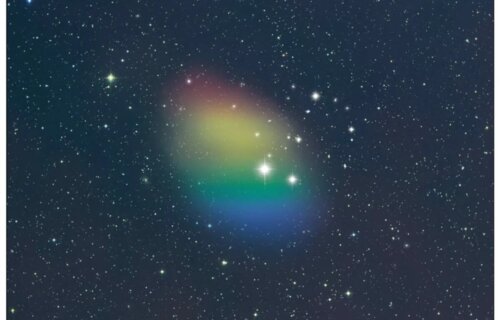GREEN BANK, W. Va. — Astronomers have stumbled upon an extraordinary phenomenon is space, a galaxy with no visible stars! Known as J0613+52, this celestial body millions of light-years away is challenging our understanding of star and galaxy formation. Perhaps even more interesting is how astronomers found this starless region. A team at the Green Bank Observatory say they actually pointed their telescope at the wrong area of space!
This discovery, revealed at the American Astronomy Society’s annual meeting, came about during a survey of 350 unique galaxies, specifically focusing on each one’s hydrogen gas content. The survey also involved some of the world’s major radio telescopes like the National Science Foundation’s Green Bank Telescope, the Arecibo Telescope, and the Nançay Radio Telescope.
“The goal was to determine the gas and dynamic masses of these ultra-diffuse galaxies. To do this, we observed them from several instruments, and many of them more than once,” notes Karen O’Neil, senior scientist of the Green Bank Observatory, in a media release.
Low Surface Brightness (LSB) galaxies, like the ones studied in this survey, are faint and diffuse. This makes them hard to observe and understand, especially when it comes to learning how stars and galaxies form and evolve. The Milky Way and other galaxies we know more about are quite different from these LSB galaxies.
During this massive review of the cosmos, a fortuitous error led to a much more interesting discovery than hydrogen gas content.
“The GBT was accidentally pointed to the wrong coordinates and found this object. It’s a galaxy made only out of gas—it has no visible stars. Stars could be there, we just can’t see them,” O’Neil explains.

To this point, J0613+52 is unlike any other LSB galaxy discovered in the universe.
“What we do know is that it’s an incredibly gas rich galaxy. It’s not demonstrating star formation like we’d expect, probably because its gas is too diffuse. At the same time, it’s too far from other galaxies for them to help trigger star formation through any encounters. J0613+52 appears to be both undisturbed and underdeveloped. This could be our first discovery of a nearby galaxy made up of primordial gas,” the senior scientist continues.
O’Neil’s suggestion that J0613+52 may be composed of primordial gas means it could be made of material from the early universe. This hypothesis, if confirmed, could provide significant insights into the early stages of how galaxies form.
However, J0613+52 remains enigmatic, with more questions than answers about its nature. A deep optical image, which involves using powerful telescopes to observe different light bands, might reveal more about this galaxy, pushing the boundaries of our ability to observe stellar light. Its low surface density of gas makes it challenging to observe at other wavelengths.
“A full sky survey by an extremely sensitive instrument like the Green Bank Telescope could uncover more of these objects,” O’Neil concludes.
For now, we have a deep space mystery — where are all the stars in galaxy J0613+52?

Lots of gas, but where is the dust? I was under the impression that dust was part of a requirement for Star formation. Without dust the temperature required is not met.